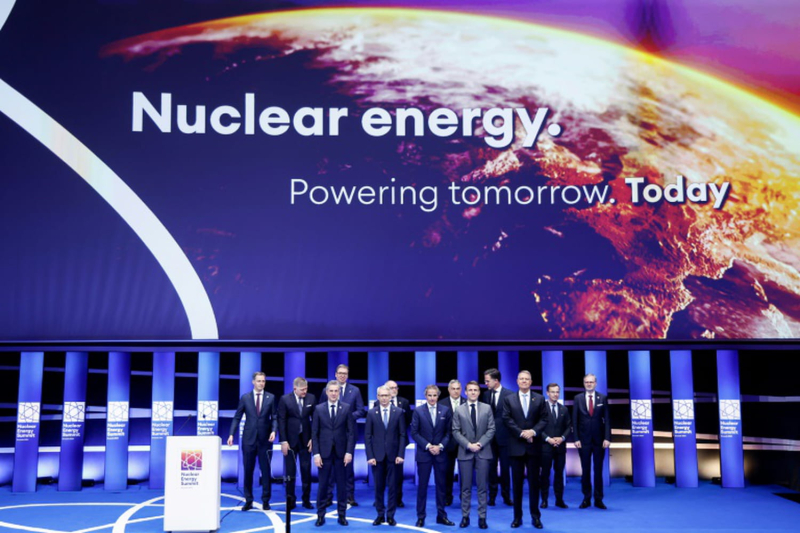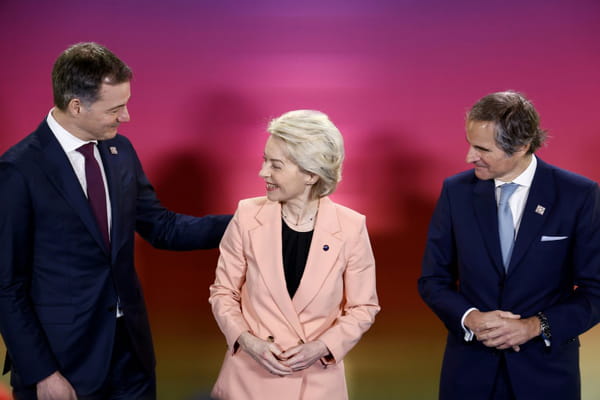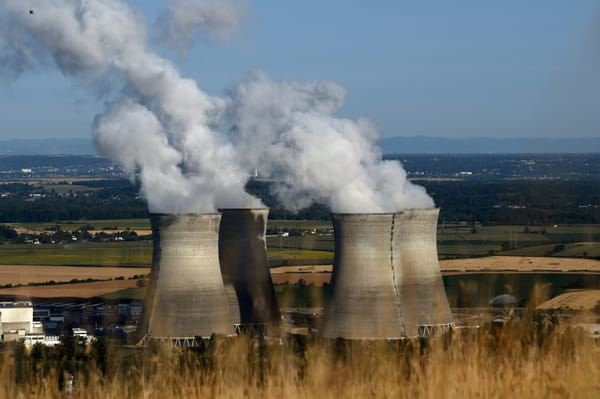An international nuclear summit on Thursday Brussels confirms the graceful return of the atom to the European Union, where it now benefits from more accommodating legislation as a lever for decarbonization alongside renewables, under the influence decisive decision of France. The nuclear subject has long been taboo in Brussels, victim of the hostility of Germany which had turned its back on the atom after the Fukushima accident. But for two years it has been making its mark again on the European agenda. “We are seeing a growing awareness of its essential nature to confront certain urgent global challenges” like global warming, notes Rafael Grossi, director of the International Atomic Energy Agency (IAEA), praising “clean and reliable” electricity. The first summit organized by his institution to promote the atom brought together in the Belgian capital around fifty countries, including China and the United States, and 25 leaders, including French President Emmanuel Macron who worked for this comeback. “For four years, we sowed seeds, they germinated, we are starting to harvest”, comments MEP Christophe Grudler, of the Renew group (centrists and liberals ). The shift dates back to the end of 2021: under pressure, the President of the European Commission, Ursula von der Leyen, recognizes that the EU “needs” nuclear power “as a stable energy source”, before the European executive classified it in its list (“taxonomy”) of sustainable investments. Nuclear power, which allows to free itself from Russian gas, also benefits from the break with Moscow after the invasion of Ukraine in February 2022. At the start of 2023, French mobilization becomes more visible with the launch of a “European nuclear alliance” bringing together a dozen member states: Bulgaria, Poland, Finland, Sweden, the Netherlands, the Czech Republic… Several victories followed: in June, Paris obtained an exemption in the legislation setting renewable energy objectives, to take into account hydrogen produced from nuclear electricity. States and MEPs agreed in mid-December on public aid for investments in existing nuclear power plants, then in mid-February to include the entire nuclear sector in legislation granting relief regulatory requirements for “zero emission” technologies. Finally, Brussels included the atom in its proposals for a 2040 climate objective, and launched an “industrial alliance” at the beginning of February to future small modular reactors (SMR). – “Converting momentum” – “Over the last 18 months, a certain number of States have expressed themselves more openly, working together to have a framework that suits them,” observed Massimo Garribba, from the Commission's Directorate-General for Energy, during a conference on Monday. Ursula von der Leyen, Belgian Prime Minister Alexander De Croo (L) and Director General of the IAEA, Rafael Grossi in Brussels on March 21, 2024 © AFP – KENZO TRIBOUILLARD Now, for the “Nuclear Alliance”, “this momentum must be converted into a global and favorable framework”, particularly in terms of financing by the European Investment Bank (EIB), by putting the atom on par with renewables “without any form of discrimination” to achieve carbon neutrality in 2050. This principle of “technological neutrality” fuels a dispute between Brussels and Paris: France did not achieve the European renewables objectives in 2020 and refuses to regularize its situation. “France is not going to pay penalties: these objectives of having so many wind turbine masts here, so many photovoltaic panels there, this is the Europe we no longer want,” protested at the beginning of March the Minister of the Economy Bruno Le Maire, recalling the good French carbon footprint thanks to nuclear power. – “Theoretical” – Same tensions regarding the energy plan prepared by Paris without setting renewables targets: Brussels demands details by June, estimating that France “should raise its ambitions to at least 44% renewables” in 2030 , against 20% currently. “We cannot imagine mixing or substituting nuclear and renewable targets”, Spanish Minister Teresa Ribera was indignant in mid-December, whose country leads the EU alliance of “Friends of Renewables” with Austria, Germany and Luxembourg. The Bugey power plant in Saint-Vulbas in Ain. The nuclear subject has long been taboo in Brussels, victim of the hostility of Germany which had turned its back on it after the Fukushima accident. But it has established itself again for two years on the European agenda. © AFP – OLIVIER CHASSIGNOLE “On nuclear power, for the moment I see more plans on paper than investments”, said German Minister Sven Giegold ironically at the beginning of March, praising the “competitiveness” and the immediate availability of renewables. “The +SMR+ will be ready by 2035, the new generation EPR reactors around 2040: it's a long way off, but now is the time to set the framework , the financing plans” which promise to be colossal, retorts Christophe Grudler. With 100 reactors in service in 12 states, nuclear power produces a quarter of the electricity of the EU, almost half of its carbon-free electricity. Around sixty new reactors are planned or envisaged, including a third in Poland. All rights of reproduction and representation reserved. © (2024) Agence France-Presse



